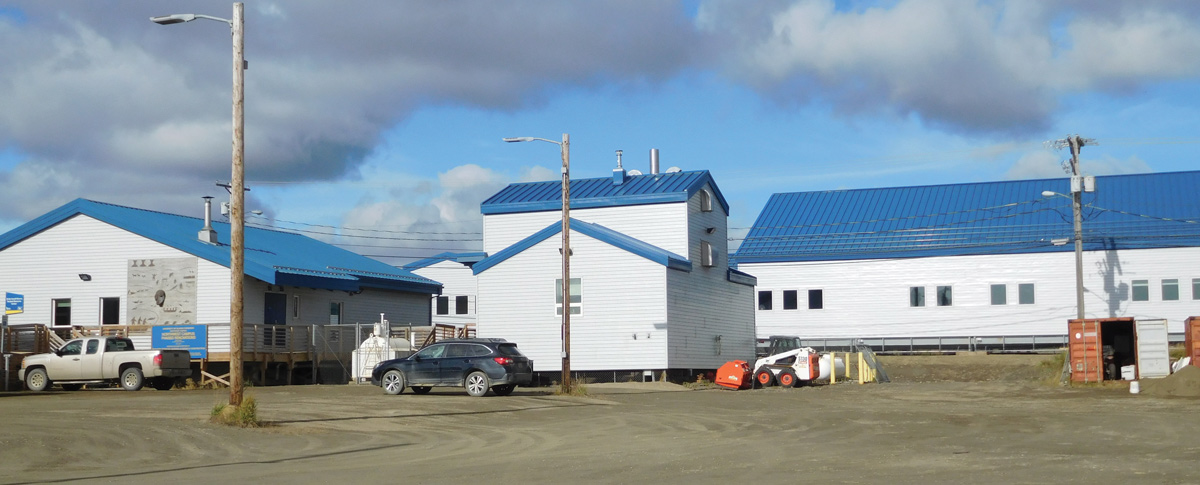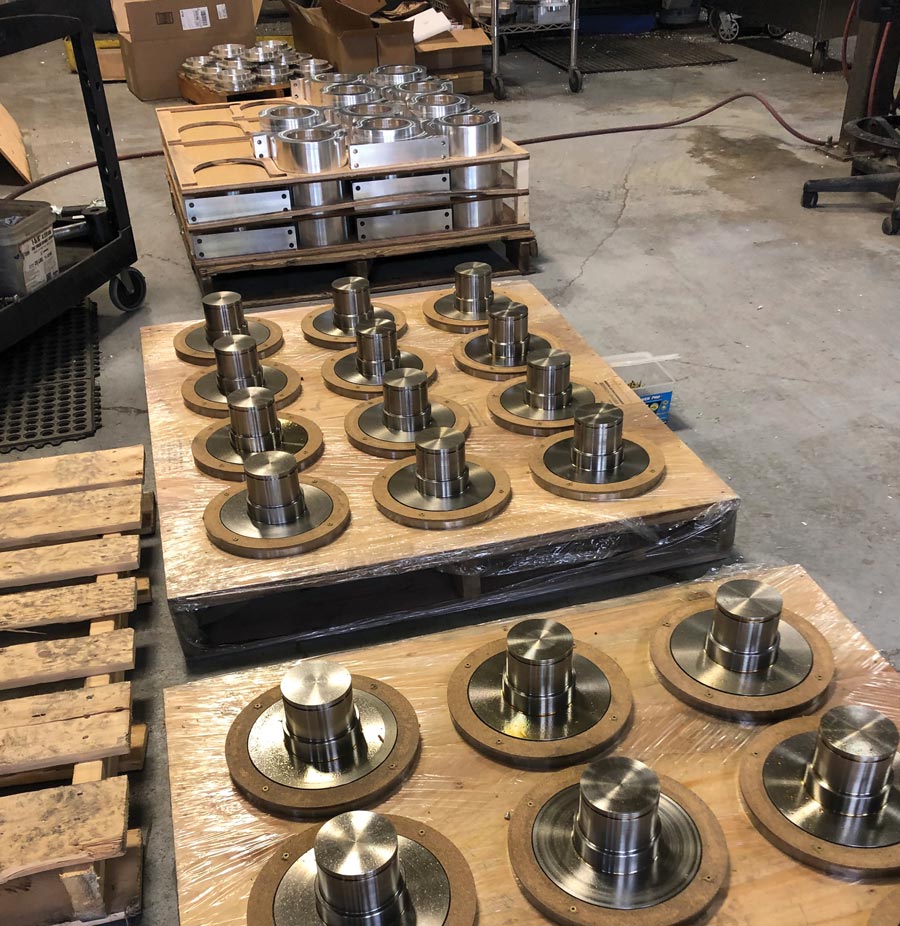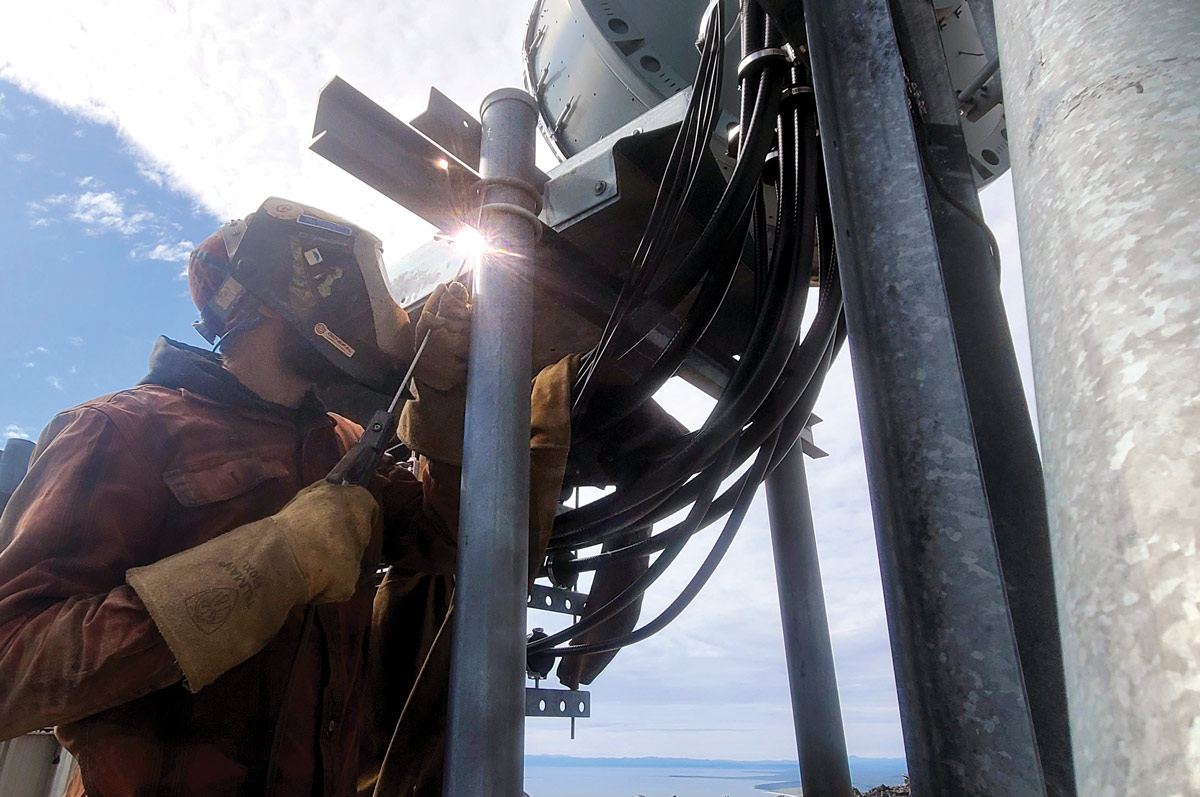In
Specialty
contractors
sharpen skills for
market niches
very construction company launches with a single project. How companies evolve from there depends on the market, clients, and the inclination of the owners. While diversity has its strength, for some construction companies, specialization has laid out a path for success.
Denali General Contracting, as the name implies, is not a specialist, yet the Anchorage-based company boasts a specialty: it’s prepared for projects in rural Alaska. Remote work takes a special skill set—advanced logistics, excellent attention to detail and, above all, a love for working in rural Alaska.
“You have to be prepared, you have to be organized, you have to be comfortable in that environment, and your team needs to be comfortable in that environment,” says Chris Hamre, president of Denali General.
At a job site in Anchorage, not having a tool or part can be fixed with a trip to the hardware store. Working remotely, small errors like that can cost time and significantly more money.
Making a rural project successful boils down to good planning, Hamre says. Ideally, projects are bid and planned over winter; Hamre’s goal is to have materials delivered dockside in Seattle by April, ready for a May shipment to Alaska and then consolidated for barges to the project site. The first barge has items for excavation and pouring concrete, and each subsequent shipment should contain materials needed for the next steps of the project. Hopefully everything arrives according to schedule and the work plan; if not, and the last barge of the year is missed, items might have to come via air freight or, in extreme cases, a plane might need to be chartered.
The timing of materials and equipment is key, but so is building a strong team, Hamre says. It’s easiest to work with people who are comfortable working a remote job; the hours are long, and the uninitiated might find it difficult to be away from home for a longer stretch.
Hamre says Denali General, celebrating its 40th year in business, has been working in rural Alaska for about thirty years, starting with a project in Bethel. Lessons were learned through that project, he says, including better planning for housing. Hamre has since purchased man camps that can be set up at some rural job sites, or he looks for local housing on others. Making sure workers are well rested and well fed is critical, he says.
“When a guy gets on a plane, we are responsible for him until he gets back off the plane in Anchorage. Those guys are working hard—we make sure they have a warm bed and a good meal,” he says.
Alaska Roof Restorations
Alaska Roof Restorations

Roofing is already a specialized craft. Alaska Roof Restorations occupies an even narrower niche: the company repairs and restores flat, low-slope, and metal roofs, saving owners the cost and waste of completely re-roofing a building.
“We’re the only ones that do specifically what we do; there are other companies out there spraying roofs—we restore the roof assembly and the surface,” says Tyler Moor, president and founder of Alaska Roof Restorations.
Moor is a painter by trade, working in Alaska since 2014, and he also runs a drywall company. He says he started coating roofs to restore membranes and metal roofs, but the process evolved over time. His method currently involves assessing the damage on a roof—through collecting cores or thermal imaging—and repairing those sections before creating a new fluid-applied membrane over the whole roof that will last twenty to twenty-five years.
Denali General Contractors
Denali General Contractors

“We primarily restore commercial and industrial roofs,” Moor says. “The other roof that lends itself to what we do is… the pre-engineered metal buildings with the roof fastened onto the structure. If you have a large, pre-engineered metal building, you have thousands of fasteners. As roofs move, those fasteners tend to come loose.”
In the case of a flat roof—like the roof on Goldenview Middle school in South Anchorage, which the company restored in 2020—a roof might have a few wet, damaged areas that must first be identified, cut out and repaired with new wood, insulation, and cover board. Then the whole roof is covered in a thick, seamless monolithic polyurea base coat; silicone coating is applied as the top coat. The silicone coating alone can extend the life of the roof fifteen to twenty years, he says.
For the middle school, a full roof tear-off and replacement was initially planned. Moor’s analysis revealed that only about 2,000 square feet of the 100,000-square-foot roof was damaged and in need of replacement, so just those areas were repaired and the whole roof recoated, resulting in a significant cost savings to the Anchorage School District. When the roof reaches the end of its next life cycle, he says, the top coat can be reapplied, creating a renewable roof system that will never need to be torn off again.
The restoration system Moor uses is fairly new to Alaska, although it is used all over the world, often in northern climates. His company has used the system throughout Alaska, from Southeast to Nome, both on and off the road system.
Founder and President
Alaska Roof Restorations
Contractors that supply parts and equipment can specialize by focusing on an elite customer base. Palmer-based Triverus began with exactly fourteen possible customers, namely the nations that operate aircraft carriers, of which there are only forty-seven afloat in the world. Triverus manufactures machines that clean the decks of aircraft carriers. The company started in a two-car garage in Anchorage’s Muldoon neighborhood, responding to a federal Small Business Innovation Research Program announcement requesting a unique innovation to keep decks of aircraft carriers clean while also restoring the friction necessary to allow jets to safely take off and land. The innovation also needed to prevent pollution—not wash dripped fuel or chemicals into the ocean as part of the cleaning process, for example.
Just getting taken seriously was a challenge, says Triverus CEO Hans Vogel. The company submitted a white paper outlining its proposed solution, but it wasn’t until it could show a 3D model that Triverus was seen as a legitimate contender. The company won an award to build a prototype in 2001, followed by several years of intermittent funding and other obstacles before it achieved a working machine that used high-pressure water, which was then filtered and recycled within the machine. By then the company had built its own facility at the Palmer Business District, a city-designated zone for manufacturing, warehouses, and distribution, with easy access to rail and road.
Triverus
Triverus

Triverus

Triverus

“We had a design that was progressing, but Alaska didn’t have enough vendors to do the direct-to-digital design that we needed,” Vogel says. “There were welding companies, but not enough vendors that could design out of different materials. These are large, complicated pieces of equipment. There are thousands of parts—this thing is as complicated as a helicopter.”
Thus, TriJet was formed—a manufacturing company also located at the business park in Palmer, to create the parts needed for Triverus’ mobile cleaning, recovery, and recycling system. TriJet independently contracts with other companies that need direct-to-digital parts manufactured.
The funding process for Triverus’ cleaning machine had fits and starts throughout, Vogel says. The initial prototype tested well in Norfolk, Virginia, but a few more prototypes sat idle in Palmer. Then two US Navy amphibious assault ships were afflicted with particles on the flight deck that caused problems with Harrier jump jets, and an effective cleaner was needed. Two of Triverus’ machines were called in, and in less than two weeks the small carriers were certified to operate again. After a few more hiccups, Triverus jumped into full production—more than forty-three have been sold to the US Navy. Triverus sends employees out to assemble the machines and provides a week of training on maintenance and operation.
From white paper to manufacturing took fifteen years. Vogel says he and others at Triverus learned a lot along the way. The company is still making new machines, maintaining existing machines, and expanding into other commercial cleaning and environmental cleaning markets. The COVID-19 pandemic put a damper on growth in the municipal and commercial sectors, but the company saw a rebound in 2022 and recently began shipping machines again.
“We’ve been really aggressive on the commercial side of this. We also have a surface cleaning business; we go out and do stormwater pollution prevention cleaning on the East and West Coasts,” he says. “Part of our big success was, we were able to focus on the Navy [proposal] and then transition… The Navy is not going to continue to buy these things.”
Meanwhile, TriJet has become a success in its own right. It operates separately, Vogel says, with different leadership, a different building, a different mindset. Customers other than Triverus are now its core clientele, mostly in the oil and gas, mining, and aerospace sectors.
STG
STG

One of TriJet’s primary customers is The Launch Company in Anchorage, which provides ground support hardware and infrastructure for other rocket-launching companies.
“These are small components but they’re high value, and we make hundreds of different components,” Vogel says. By focusing on familiar industry sectors, he says TriJet is positioning itself as a world-class specialized parts supplier. Or, as he puts it, “Can we make this as good as it would be made in the South 48?”
Since its origins as St. George Construction in Kotzebue to its expansion and relocation to Anchorage, STG has done it all, from fuel systems and electrical grids to bridges and waterfronts. Its subsidiaries range from expertise in pilings and foundations to hoisting cranes 400 feet high. Lately, STG has become the go-to contractor for a certain type of structure: telecommunications towers, even on mountaintops.
The telecom portion of STG’s business has expanded in the last three years, says company president Brennan Walsh. He believes it will expand further as federal spending to increase broadband availability throughout Alaska begins to flow into the state.
STG isn’t new to tower construction; the company has been building towers for more than twenty years.
STG worked with internet provider GCI over the past several years to help the company execute its GCI-TERRA network, a 3,300-mile terrestrial broadband network that connects remote communities with Anchorage. Now, Walsh says, STG is called in to help maintain the towers built as part of that and other projects.
The difference is that demand for STG’s telecom work is increasing. The company stands ready to meet the demand.
“We have certified tower climbers and enough technicians. We have enough work to keep a couple of crews busy with tower work throughout the state,” Walsh says.
The work is pretty much year-round; the work slows in the winter, but the tower crews are still called out for emergency repairs. Walsh says moving toward telecom has helped to diversify STG’s business. That is, narrowing its specialty broadened the company’s portfolio of clients.![]()